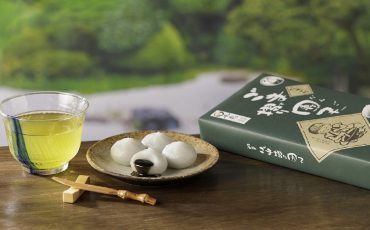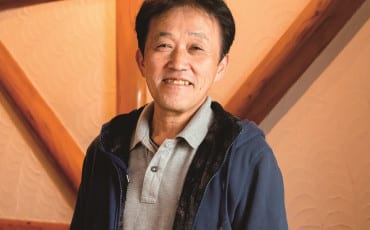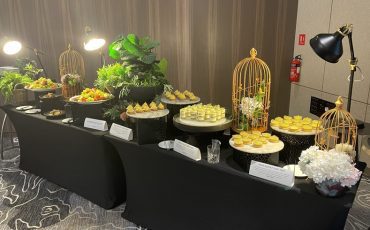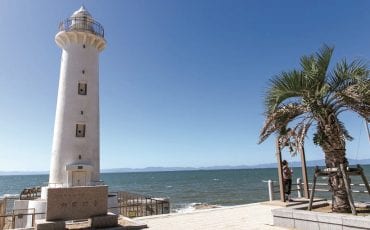Articles
Sake
Not quite sure what’s the difference between a “ginjo” and a “junmai”? You’ve come to the right place, because your sake education starts right here.

Sake is known around the world as the Japanese alcohol beverage that’s made from fermenting rice. However, that’s somewhat of a misnomer. In Japan, the word “sake” generally refers to any alcoholic drink. But what we’re actually talking about when we use the word “sake” in English are actually particular variants known as “nihonshu” or “seishu” (“Japanese liquor” and “clear liquor” respectively).
To complicate things further, sake has been loosely translated to “rice wine” – which, again, isn’t exactly accurate. While producing wine involves the fermentation of sugars present in grapes or other fruit, the process of brewing sake is actually closer to that of beer, which requires sugar to first be converted from starch, before it’s able to produce alcohol.
Neither Like Beer Nor Wine
But that’s where the similarity to beer-making ends. In brewing beer, converting the sugar from starch, and then from sugar to alcohol, takes place in two distinct steps. In sake, however, these two steps happen simultaneously – a fermentation process that’s wholly unique to sake.
First, polished rice is ground, washed and steamed. Some of the steamed rice is used to make yeast known as “koji”, which is then put back with the remaining rice and water to ferment.Following this, the mixture is then filtered, pasteurised, and put into cold storage to allow for maturation before it’s bottled. Although we’ve only briefly mentioned the steps here, each of the steps is an extremely laborious process in itself. Besides quality rice and pure water, good land, and suitable climate, a knowledgeable toji (head brewer) is needed to brew great sake.
The Heart and Soul of Any Good Sake
It’s rice, of course. Before conversion to starch, the rice grains have to be carefully milled. This is because the outer parts of rice grains often contain impurities that need to be milled or “polished” away, as impurities can negatively affect the taste of the drink. The more the rice is polished, the more premium the sake, as more rice and more labour-intensive processes are required to produce the beverage.
The ideal water for brewing sake should be rich in minerals such as potassium, magnesium and phosphoric acid. These will help develop the koji, as well as encourage the propagation of yeast. The water, however, should not have iron and manganese as these can affect the final taste of the product.
The History of Sake
Wet rice cultivation started in Japan in 300 BC, and sake was most likely developed a few hundred years after that. Some of the earliest references to alcoholic beverages can be traced to Kojiki, Japan’s first written history, which was compiled in 712 AD.
“True” sake, as we know it today – made from rice, water and koji mold – was only properly developed during the Nara period (710 – 794 AD). Interestingly, during the Heian period (794 – 1185 AD), sake was exclusively consumed during religious ceremonies and court festivals.
For centuries, sake production remained a government monopoly. But in the 10th century, temples and shrines became the main centres of sake production, and would continue to be so for the next 500 years.
From the later part of the 15th century, the production of sake evolved. Pasteurisation became the norm, as did adding ingredients to the fermentation mash, as well as the polishing of rice grains (where whole rice grains were previously used). However, sake only started to be filtered from 1578, resulting in the clear drink that we’re familiar with today.
It was during the Edo period (1603 – 1868) that sake production really took off on a widespread scale, thanks to industrialisation. Previously, the job of rice polishing was done by hand, using a large mortar-and-pestle utensil, or even by people stamping on it. But thanks to advances in technology, waterwheels were used to power rice-polishing machines, which enabled higher quantities of sake to be produced.
Major Sake Producing Regions
Fushimi, Kyoto Prefecture
Fushimi is the second most prominent sake-producing region in Japan. Famous for its abundance of hot springs, this underground water is soft and mellow, producing sake that is slightly sweet, fragrant, and more feminine in character compared to its Nada counterparts.
Niigata Prefecture
Thanks to its over 30 feet of snowfall every year, it’s little wonder that “Niigata” and “sake” are often mentioned in the same sentence. As the snow melts, the water that runs off creates a pure and pristine environment for rice paddies. The constant snow during winter also doubles up as a natural “air purifier”, creating an environment free from pollutants and microbes that can affect the final taste of the sake.
Kobe and Nishinomiya, Hyogo Prefecture
Nada-Gogo refers to the five groups of sake breweries in the cities of Kobe and Nishinomiya. This area accounts for over a quarter of Japan’s sake production. Sake produced in this region has a few distinctive characteristics. Firstly, yamadanishiki rice is used; this type of rice is well suited to sake production as it has a dense white core, low protein content, and consistent size and texture. Secondly, the hard water that flows off Mount Rokko helps produce strong, thick sake. Lastly, the cold winds blowing down from the mountain function as a natural coolant that helps slow the fermentation process.








